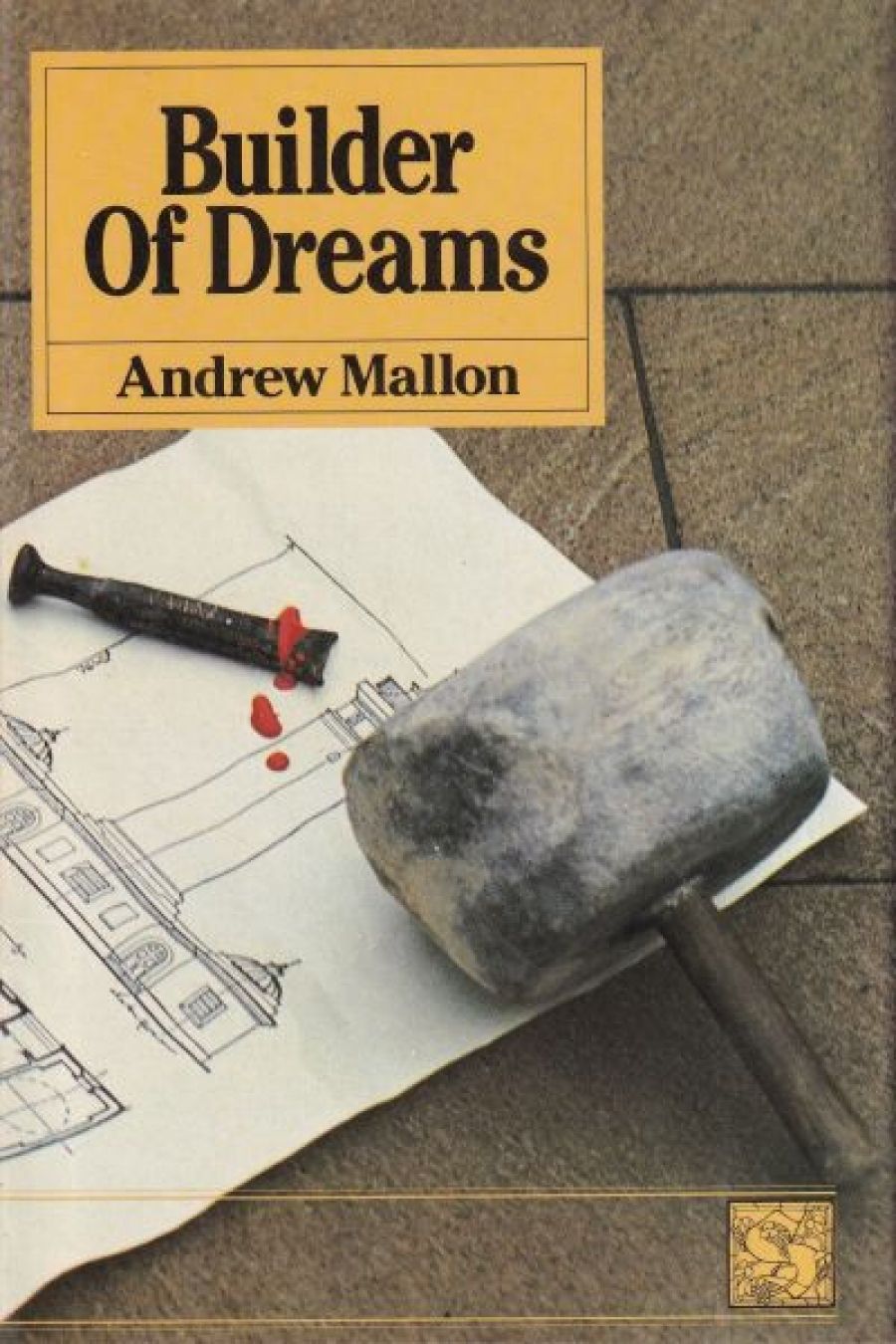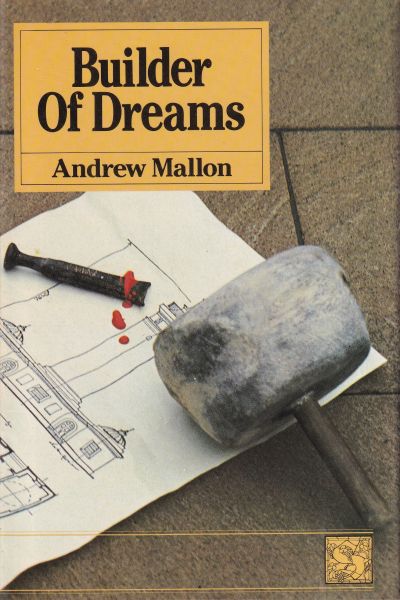
- Free Article: No
- Contents Category: Fiction
- Review Article: Yes
- Article Title: More Sydney Cops: And a convict who made it
- Online Only: No
- Custom Highlight Text:
Tom Howard is a new character/pseudonymous author in the same general region inhabited so prominently by Peter Corris’ Cliff Hardy, although with the publication of his first two novels it remains to be seen how far Howard will be able to rival Corris’ talent for bringing out the local flavour of crime and corruption, and how far his books will simply have Australian settings grafted on to classic forms of the whodunnit. Of the two Howard novels under review The Health Farm Murders follows the formula of a small isolated community with its numbers dropping off like ninepins, while The Beach-Front Murders is a much more credible account of passion and loneliness, of the lure and isolation of the big city.
- Book 1 Title: The Health Farm Murders
- Book 1 Biblio: Rastar Pty Ltd, $19.95, 337pp
- Book 2 Title: The Beach-Front Murders
- Book 2 Biblio: Rastar Pty Ltd, $19.95, 222pp
- Book 3 Title: Builder of Dreams
- Book 3 Biblio: Rigby, $9.95, 284pp
- Book 3 Cover Small (400 x 600):

- Book 3 Cover (800 x 1200):

By contrast, Tom Howard lives alone in a bleak beach-side home unit in the Manly area of Sydney – on the wrong side of the building of course: ‘No beach views on a sergeant’s pay’, and if he has to travel it will most likely be by train – second class in accordance with police regulations. Tom Howard clearly inhabits the presentday world of AIDS and anorexia nervosa, of home unit body corporates and Pritikin diets (‘I eat a ton of fibre for breakfast but sometimes I get constipated for days’) but there is also a curiously old-fashioned air about him. How many hard-bitten detectives these days could come out with ‘for gosh sakes!’, as Tom is wont to do in moments of frustration?
At such times Tom sounds rather like a gungho innocent out of an Agatha Christie mystery, and in The Health Farm Murders set in the Blue Mountains west of Sydney, one is hardly surprised to find that the local chief superintendant of police drives a Bentley. The only character that seems to be missing is a formal butler.
The health farm not being cut off physically by snow or the like, one wonders why the survivors stay on as the deaths mount. The Beach-Front Murders – Howard’s second novel – is however much more tightly written. Essentially the story of an attractive and lonely country girl come to the city, and the interaction of her emotional instability with the vulnerability of the men in her life, the murders are kept to a more plausible number and Tom Howard’s own character is interestingly developed.
The two books are at present available only in hardcover and perhaps too expensively produced for their natural market. The publishing style, like some other aspects of the books, also has an old-fashioned touch. The print is comparatively 1arge and words like bedroom, penthouse and hallway are all hyphenated. There were also one or two outright mistakes –like electoral role.
At all events Tom would probably do well to try to keep out of crime’s way for a spell and spend a bit more time with his law books. The suggestion at the end of The Beach-Front Murders that the killer is likely to be charged with only one murder and to get a light sentence is highly implausible – even in New South Wales. And there ain’t no statute of limitations for robbing banks – or for any other serious crime – in these here states, Tom. Maybe our hero was reading Maigret stories when he should have been at lectures: under French law there is a time limitation for criminal prosecutions. You should also take another look at that law degree of yours Tom. If it’s not a fake it should read ‘Bachelor of Laws’ and not ‘Bachelor of Law’ as you report.
Of course not all crimes in the colourful history of crime and corruption in New South Wales are as incorrigible as readers of recent fact and fiction might conclude, and one of the more corrigible was Francis Greenway, the convict-architect of many of Sydney’s fine historical buildings.
Greenway’s crime was to forge the signature of a client to try to enforce a verbal agreement (denied by the client) to pay an additional two-hundred-andfifty pounds for speedy completion of the design and construction of a residence. As Greenway was at the time bankrupt as a result of investments lost during the Napoleonic Wars, the only beneficiaries would have been his creditors, but neither this nor the fact that the felony carried the death penalty deterred the impetuous Greenway. The death penalty duly imposed, it was commuted to transportation and he eventually found himself in Sydney Town.
In Builder of Dreams the late Andrew Mallon has written a very readable fictionalized account of Greenway’s life and struggles from the time of the forgery to the completion of the South Head lighthouse, his first major project as government architect.
Greenway remains proud and impetuous through his travails and his confidence in his ability as an architect never leaves him. With a letter of recommendation from the then Rear- Admiral Phillip to Governor Macquarie he is quick to make himself known and to assert his claims to fill a very obvious need in the colony.
Throughout, Greenway is helped immeasurably by his intelligent and sensitive wife Mary. More stable and down-to-earth than her husband, she and their children follow Greenway to New South Wales as soon as they can. She is able to press his claims with more tact and diplomacy than Greenway himself is capable of, and with her counsel and comfort she ameliorates some of his impulsiveness and bombast.
If tending to the needs of the egocentric Greenway and coping with the consequences of the disaster of his forgery left her drained and her own emotional needs largely neglected, Mary succumbed, on Mallon’s account, but once – a serious enough transgression for a woman of her station – but she turns her back on that encounter and on the more rapturous emotion she had found in an earlier courtship, taking solace in the solidity of family life and finding some outlet for her intelligence in furthering her husband’s career.
In tracing Greenway’s path through the penal system and transportation Andrew Mallon has brought to life the horrors and brutality of those times and of the early days of Sydney. Old Sydney Town has a familiar ring of intrigue, plotting and mudslinging with an undercurrent of violence. And if (except on New Year’s Eve) The Rocks area is nowadays safer, the rogues who used to hang out there seem little more repulsive than some of the historical and other kitsch that has replaced them.
The book is reasonably priced and it is attractively produced by Rigby in their Stonyfell series. The story would make a good basis for a television series, although one also fears what those other dream-builders might make of it.


Comments powered by CComment